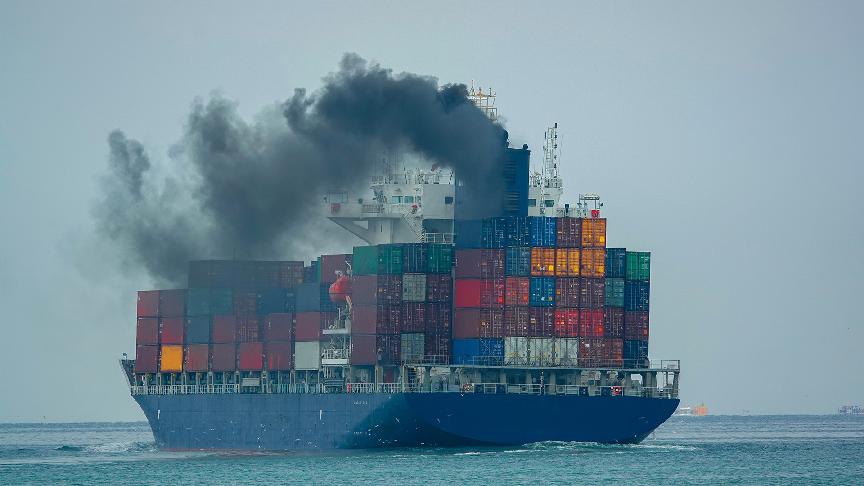26 April 2024 (Lloyd's List) BIO-LNG is not the greenest option when it comes to decarbonising shipping, but it is available.
The fact that Hapag-Lloyd won the recent zero-Emissions Maritime Buyers Alliance’s low-emission freight tender with a bio-LNG bid reveals the pragmatic stance being taken while the industry waits for the arrival of scalable zero-emission fuels that are still several years away.
Zemba, the organiser of the tender that will see a group of cargo owners willing to pay for ‘near’-zero fuel use, linked to cargoes being shipped between Singapore and Rotterdam, picked Hapag-Lloyd’s bio-LNG on the basis that it was the best available commercial option.
None of the bidders were able to offer meaningful volumes of low or zero-emission alternative fuels.
Instead, it was ultimately a decision between bio-LNG and bio-methanol, two fuel pathways that today require a carbon accounting method called mass balancing to offset the end product’s emissions with the addition of bio-gas to the natural gas grid.
Mass balancing allows companies to deliver significant emission reductions without needing new LNG bunkering infrastructure, as it will use existing infrastructure.
In the case of the Hapag bid, mass balancing will take place in the European Union, meaning it will involve injecting bio-methane into an EU country’s natural gas grid after using manure as a feedstock for bio-gas production, explained Zemba chief executive Ingrid Irigoyen.
The decision to opt for bio-LNG was not universally popular. While bio-LNG is a ready-to-go solution that can help bridge the gap between fossil-based and zero-emissions fuel, it comes with the risk of methane slip and more fundamentally sustains the continued investment into LNG as a transitional fuel. For those arguing that the shipping industry should be moving away from LNG and accelerating e-fuel options and a hydrogen pathway, such decisions come with risk.
The mass balancing route is also a pragmatic step too far for some.
“It means you don’t have to transport very small volumes of fuel halfway across the world to be put into a vessel,” explained Margaux Moore, head of the energy
transition research group at Trafigura.
“But there are concerns around whether you’re deterring some local producers that want to generate the same fuels,” she continued.
Despite the concerns, the Zemba bid marks the reality of the options available today rather than what they might like to opt for in the future.
Zemba opted for the cheaper option in bio-LNG, as its production process is shorter than bio-methanol and more suppliers currently offer it.
Zemba also shortened the duration of the tender from three years to two, in the hope that the next round will feature the renewable hydrogen-derived fuels, such as e-ammonia and e-methanol that were not forthcoming this time.
Despite the best of intentions, it appears that this round was just a shade too early for some options to make the cut.
“I think the industry will be able to bid with some e-fuels in the second tender. We may as well get a mix of bio-based fuels and e-fuels,” Irigoyen said.
The tender result proves two main points: shipping can reduce emissions drastically today and there are cargo owners willing to pay for more expensive alternative fuels. But it also lays bare potential challenges in securing sufficient alternative fuel volumes this decade, as the maritime sector’s demand signals are still deemed not strong enough to kick-start production of zero-emission fuels such as e-ammonia and e-methanol.
How it works?
A modern Hapag-Lloyd boxship will run on 20,000 tonnes of mass-balanced bio-LNG for this tender in 2025 and 2026 to deliver 90% emissions reductions to cargo owners, according to Zemba.
The containership will bunker with bio-methane in Rotterdam, Irigoyen said, noting that partners will use a method called book and claim to disconnect physical bunker supply and cargo owners’ shipments.
“In the beginning of this transition it will be almost impossible to match up cargo owners willing to pay green premiums with vessels that can run on green fuels.
That mismatch is the challenge we face in hard-to-abate sectors,” she added.
In practice, book and claim helps vessels that want to buy alternative fuels but cannot obtain it. It allows those shipowners to pay for alternative fuels and let other vessels that call at ports with available supply bunker with alternative fuels in their place.
“Key principle is that planet doesn’t care where fuel is deployed as long as we can make sure methane injected to the grid achieves 90% emissions reduction. We can claim credits for that as this is part of the mass balance and book-and-claim system,” said Irigoyen.
Lack of zero-emission marine fuels underscore the need to use such carbon accounting methods to reduce shipping emissions until near-zero emission fuels are readily available in ports around the world.
Green groups criticise Zemba’s selection of LNG
Zemba came under some criticism from environmental groups for selecting bio-LNG as the bunker fuel in its tender, as such groups suggest LNG is not a viable alternative fuel because of its methane emissions that have more planet-warming potential than carbon.
“There is a significant risk this contract could make the case for building new LNG infrastructure,” environmental groups’ ‘Say No To LNG’ campaign said in a press release that criticises Zemba’s selection.
“We’ll be monitoring methane slip closely. Hapag-Lloyd’s vessel will be the most efficient one to limit methane slip,” Irigoyen said.
Irigoyen said the tender would not spur new LNG infrastructure. She said there were already hundreds of LNG dual-fuel vessels as well as LNG bunker supply
available in Rotterdam; an extra 20,000 extra tonnes would not make the difference.
Opponents of Zemba’s approach also suggested bio-methanol would have been a more viable option for the first tender, arguing that it allows a pathway to renewable hydrogen-derived e-methanol in the future.
Zemba mostly received bids involving bio-based fuels in its first tender such as bio-methanol and bio-LNG, Irigoyen said, noting that bio-methanol also requires use of bio-gas during production.
Zemba expects more cargo owners to participate in the second tender.
“Cargo owners are under pressure to reduce their supply chain emissions as many of them have made ambitious public commitments to achieve those goals. By working through Zemba they can lock in those emissions reductions,” Irigoyen said.
The major win for Zemba is that the bid challenges the perception that there is no willingness to pay for solutions far in excess of compliance.
A recent customer survey from Flexport concluded that less than a fifth of its customers were of the opinion that using biofuels to cut emissions would be preferable
if available, while 70% said they were interested, but only if there was no additional cost. Less than a quarter would be prepared to pay even 10% more for lower emission shipping.
But the Zemba project at least demonstrates that there are some forward-looking cargo owners, especially in the container shipping segment, who are willing to pay for green fuels today.
Irigoyen believes these leading cargo owners will have early access to low-emission freight as green fuels are in limited supply today, whereas she believes lagging cargo owners will have a much harder time accessing those fuels.
Irigoyen also underlines that leading cargo owners require global regulations to ensure a level playing field.
“They don’t want to just pay for green premiums while other carriers go on using fossil fuels,” she said.







